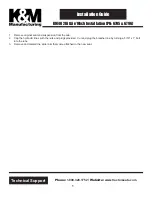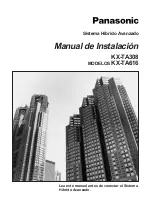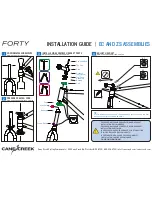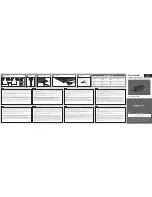
16
6a
39a
4a
4b 6b
39b
Caliper
Movement
1
Caliper
5
Guide Pin
13
Tappet and Boot
Assembly
23
Adjuster Unit
7
Brass Bushing
10
Cover
61
Shear Adapter
68a
Cap
37
Adjuster
Cap
6c Guide Sleeve
4c Guide Pin
39c
Caliper Bolt
68c
Cover
(6a): Rubber Bushing
(39a): Caliper Bolt
(4a): Guide Pin
(6b): Rubber Bushing
(39b): Caliper Bolt
(4b): Guide Pin
GUIDE PINS
CAUTION: Follow all standard safety procedures
including, but not limited to, those on page 2 of this
service manual. See the vehicle manufacturer's
recommendations. When working on foundation
brakes, be sure that the vehicle is on level ground,
that the vehicle is parked by other means than the
foundation brakes, and that the wheels are chocked.
Note: If the steps below lead the technician to a step where
the wheel needs to be removed, inspect first to see that
there is no contact between the caliper and axle, vehicle,
chassis sections or carrier, etc. that may be impeding the
caliper movement. When removing wheels, refer to the
vehicle manufacturer’s recommendations.
This guide pin inspection should be carried out if the
result of the Caliper Movement Test (see Page 13) is
that the technician cannot move the caliper.
GUIDE PIN BEARING INSPECTION
Use the following procedure to check caliper movement
along the guide pins:
Remove the Pads (see Page 18).
One of the three different styles of guide pin (A, B, or C)
may be present (See Figure 28). The bearings for styles
A and B use a rubber bushing, and style C uses a guide
sleeve. Clean dirt, road grime, etc. from the guide pin or
cover.
Using hand pressure only (no tools), the Caliper (1)
should slide freely along the whole length of the Guide
Pin arrangement. With the pads removed, this movement
should be at least 0.8 inch (20mm). If the movement is less
than this amount, replace the caliper/carrier assembly.
To measure the clearance from the rubber bushing (6a,
6b) or guide sleeve (6c) to the guide pin:
See Figures 29 and 30. Remove the wheel. Remove the
pad retainer (11), but leave the pads (12) in position. Attach
a magnetic dial-gauge holder to the carrier (2) on the short
bearing side of the caliper (1).
Use the measuring point on the caliper (1) - see the arrow
in Figure 28. Press the caliper in the direction of carrier
(2) and set the dial-gauge to zero.
Place a suitable tool (e.g. screwdriver) between Carrier
(2) and Caliper (1) forcing them in opposite directions, and
read the maximum value on the dial-gauge.
For styles A and B guide pins, if the value is greater than
0.079 in. (2.0 mm), or for style C guide pins, if the value
is greater than 0.039 in. (1.0 mm), the caliper/carrier
assembly must be replaced.
FIGURE 28 - GUIDE PINS
SHORT
BEARING SIDE
FIGURE 29 - MAGNETIC DIAL-GAUGE
12 Pad Assembly
1
Carrier
2
Caliper
LONG
BEARING SIDE













































